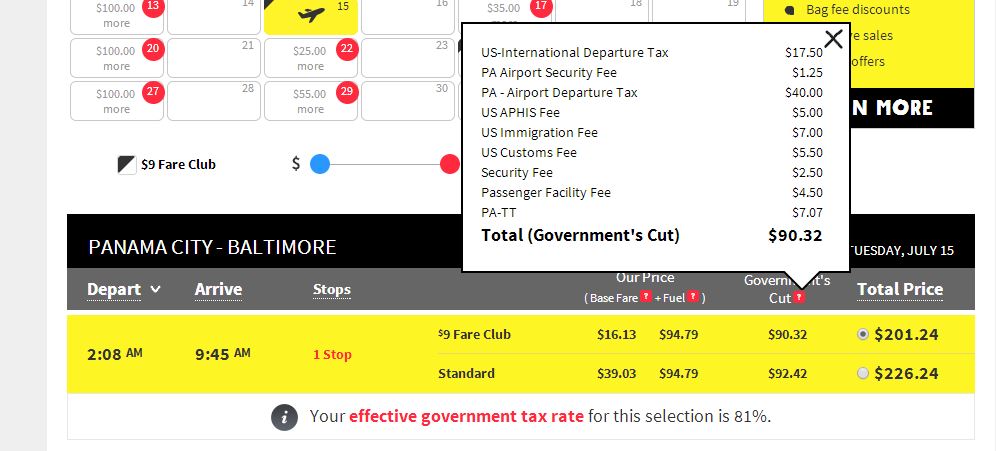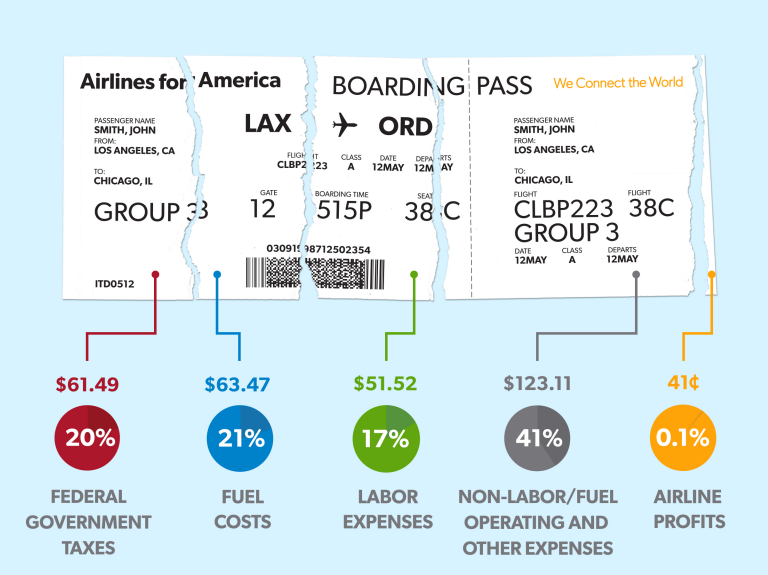Airline ticket prices are soaring this summer. Prices are up 12 percent since 2009, even after adjusting for inflation.
When customers of Spirit Airlines book their flights, they can see exactly what they’re paying for. Spirit provides a breakdown of individual factors that make up the total cost of an airline ticket, including the base fare, fuel prices, and taxes/fees (aka the government’s cut).
For an international flight from Baltimore-Washington International Airport to Panama, Spirit reports that a fare of $201.34 includes $90.32 in taxes and fees for the U.S. and Panama governments. That’s an effective tax rate of 81 percent, not counting things like taxes on jet fuel and payroll taxes.

Spirit even explains that its base fare includes $2.00 for “unintended consequences of DOT (Department of Transportation) regulations.”
According to the U.S. airlines’ trade association, for a $300 domestic ticket, $61.49 goes to the federal government, and just 41 cents goes toward airline profits.

More businesses should copy Spirit, and help their customers understand the impact of government policies on the price they pay.
This piece originally appeared in The Daily Signal

